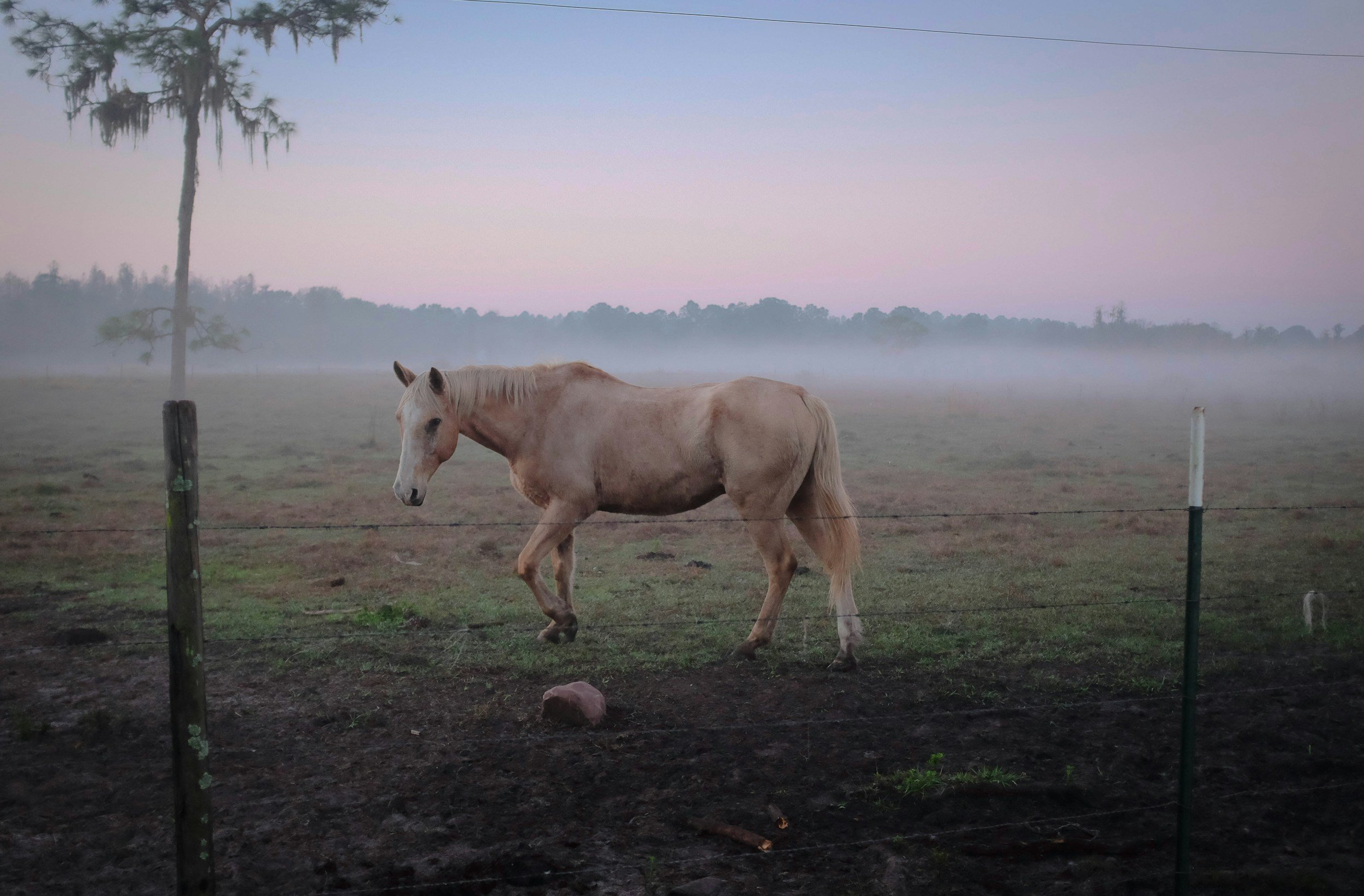Winter Care and Feeding
Cooler weather makes winter a favourite time for horses. With no flies, midges, or itchy sweating, horses can run free and soak up the winter sun!
Cool temperatures mean less stress and more time in the ‘thermoneutral zone’ (TNZ), the temperature range in which horses do not need to sweat or shiver. The TNZ varies with age, gender, breed, weather, exercise, and feed.
Typically, horses don't shiver until the temperature drops below 0°C for a weanling and –15°C for an adult horse. The colder the air, the more heat they lose. However, the heat generated by digestion and movement helps them stay warm, so they only start shivering when it gets extremely cold.
Provide plenty of roughage/forage
To help horses stay warm in winter, provide plenty of roughage. Hay or pasture is best, and oats can also play a role in certain situations. High-fibre feeds produce body heat when fermented by hindgut bacteria, generating heat and nutrients for the horse. High-starch feeds, such as corn molasses and sweet feeds, do not generate this fermentative heat and do not make your horse ‘hot’—they can increase energy and excitability but do not generate significant core body heat. You may notice your horses eating more hay as the weather cools down because this helps them stay warm from the body heat generated during digestion.
The most efficient way to keep horses warm during winter is to feed more highly-digestible hay, at 2–2.5% of body weight, in a ratio of 50-60% lucerne and 40-50% grassy/oaten hay. Beet pulp can also be a beneficial source of fibre. When the weather is wet and windy as well, energy needs increase by 40-50%, and some oats may be useful, but not more than 1-2kg per meal. Always start with a small amount and increase slowly to allow the gut bacteria time to adapt to the increased starch. Yearling horses fed a high-quality diet free-choice can tolerate temperatures as low as -11°C with no ill effects. In cold weather, feeding good-quality hay free-choice is the simplest way to ensure that the horse meets its energy requirements.
Bran Mash and Oil
A warm bran mash is traditionally used for its laxative effect and is a great way to give horses a treat on cold nights. However, loose manure the day after a bran mash is due to the sudden change in diet, which irritates the gut wall and compromises the bacteria in the large intestine. Bran should be restricted to less than 10% of the diet, as it contains nine times as much phosphorus as calcium. An occasional bran mash is not harmful, but a separate calcium supplement may be necessary. High phosphorus and low calcium and minerals in grain can unbalance the diet, especially for young, pregnant, or working horses - a well-balanced concentrate, based on vegetable protein meals, vitamins, and minerals, will correct the imbalances.
Increasing the oil in the diet is another safe and effective way of increasing energy, especially for working and performance horses.
Impaction Colic & Water Access
Impaction colics are more common in winter, partly because mature hay and pasture have a lower water content than young pastures, but also because horses drink less if the water is below 2°C.
If your winter brings ice and snow, make sure clean, fresh water is available. Horses have to consume ten times their water requirement in snow conditions to meet their needs, and they need to use energy to raise the temperature of the snow to body temperature. This is a huge energy drain and, when hay is poorly digestible, can lead to gut impaction colic.
Body Condition
Keep an eye on ‘easy keepers’ who can quickly accumulate body fat as they adapt to the cold. Energy requirements decrease as they get used to winter weather, and in no time can get too forward in condition, especially as the weather warms into spring, energy demands decrease, and pasture growth resumes.
Feeding Tips
Also, keep a special watch on timid horses. Groups of horses typically have a pecking order for feed and space, and timid horses can become thin, even if plenty of feed is available, because the dominant horses in the group won't allow them to eat. Ensure enough individual feeding space (3–15 meters between horses) is available for the horses in the group. Using feed bins rather than placing feed on the ground can reduce feed wastage by 25%. Always make sure a good quality, well-formulated salt and mineral block is available.
Enjoy the cooler weather and remember, every horse is different. Keep a watchful eye on body condition and growth, and enjoy watching your horses love the cooler weather.
Dr Jennifer Stewart
BVSc BSc PhD Equine Veterinarian and Consultant Nutritionist


